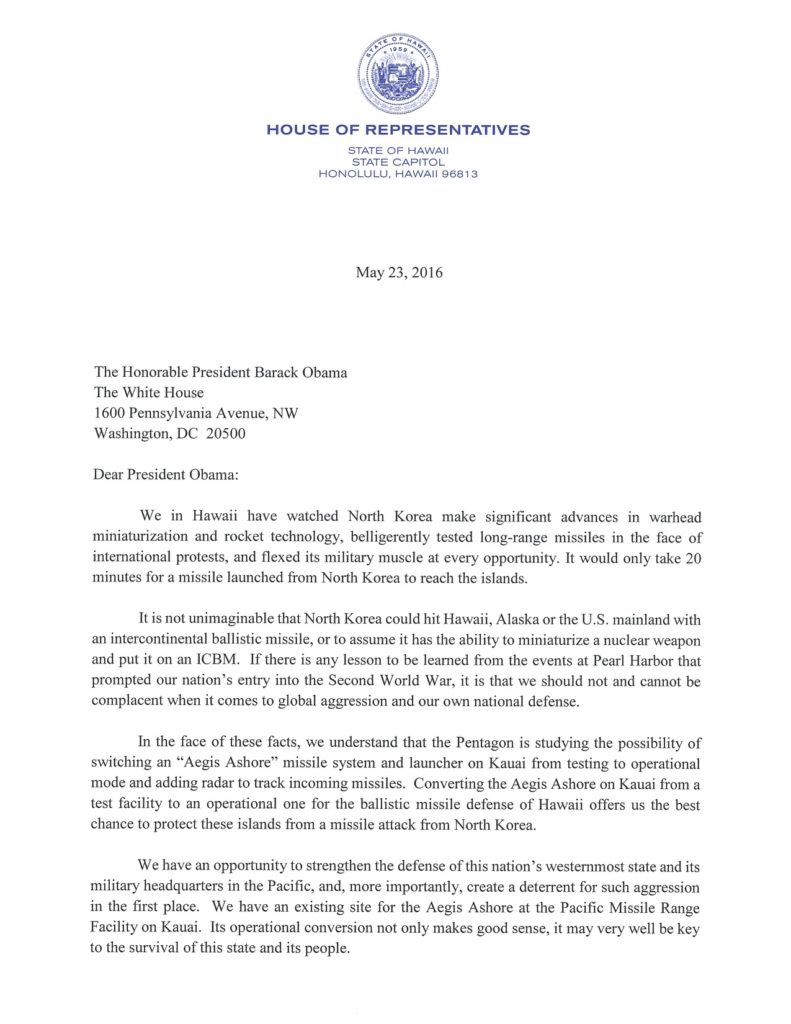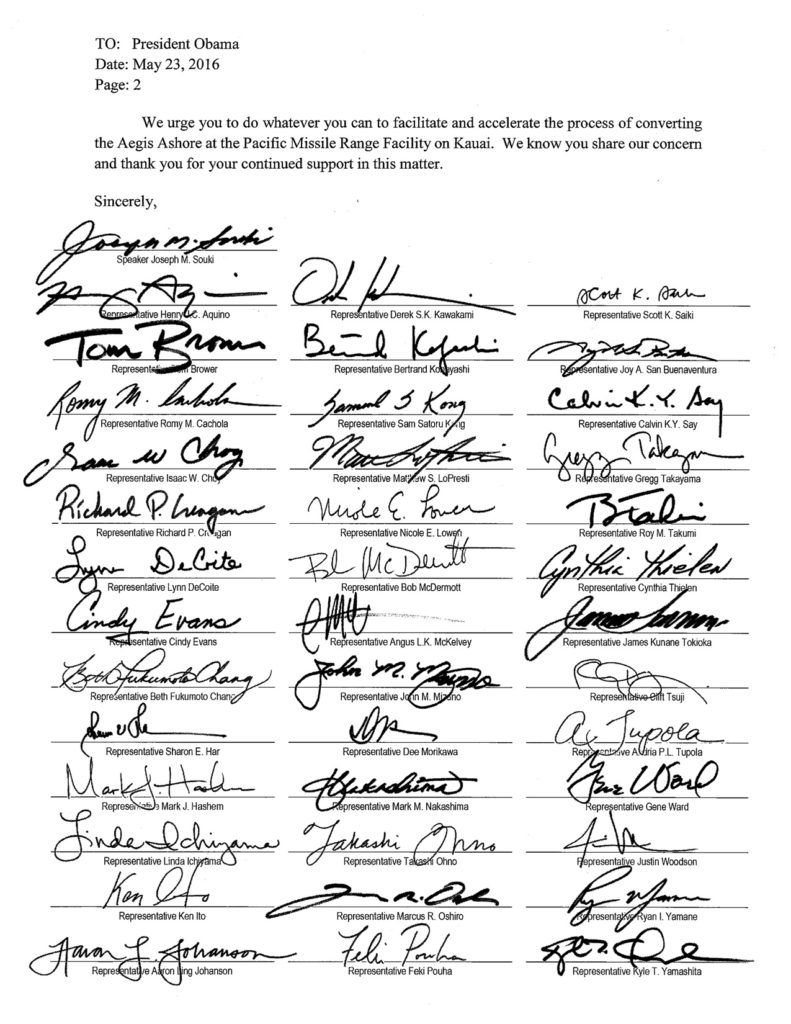Dear Members and Friends,
This morning, North Korea launched two NoDong medium-range ballistic missiles, one was terminated after launch and the other ballistic missile flew around 1,000 km and landed in the Sea of Japan 250 km west of Akita Prefecture’s Oga Peninsula, inside Japan’s exclusive economic zone (link). This was a clear blatant violation of Japanese sovereignty. Clearly an egregious violation, the 27th this year alone, of numerous United Nations Security Council Resolutions. Exacerbating this outrageous act, last week North Korea’s Foreign Minister Ri Yong Ho stated the United States removed the possibility for a “Nuclear Free” Zone on the Korean Peninsula (link). Today, North Korea is believed to have up to 21 Nuclear weapons (link) and have conducted four nuclear weapons tests despite United Nations Security Council Resolutions, with the most recent in January of this year.
Enough is enough, the rapid acceleration of banned ballistic missile launches by North Korea, of which each improves the reliability and capability of their missile forces, coupled with the miniaturization of their nuclear weapons makes a mockery of the International Community and the United Nations Security Council. There is a persistent accelerating nuclear ballistic missile threat to the Pacific region, including territories of the United States of America. Left unchecked, a nuclear war, a world war and millions of human lives are at stake.
Fifty million people in the Republic of Korea, 126.4 million people of Japan, 172,000 people in Guam, 1.43 million in Hawaii and 324.1 million people in the United States of America have to be protected and defended from this continual growing threat of North Korean nuclear tipped ballistic missiles. It cannot be ignored.
On July 8, 2016, the Republic of Korea made the decision to deploy THAAD, in order to best defend their people (link). Japan, without question, should make the decision to follow South Korea and deploy one or two THAAD batteries in order to help best protect their people in the unstable environment created by North Korea. There are five THAAD units, of which only one is actively deployed. Currently, the Japanese Government is considering the purchase of THAAD and Aegis Ashore missile defense systems.
Hawaii and its 1.43 million people are not defended from North Korean ballistic missiles to the same degree and confidence as the rest of the United States of America and the American territory of Guam. Hawaii’s defense relies on a one shot opportunity of the Ground Based Interceptors (GBI) that are 2,500 to 3,100 miles away in Alaska and California and currently are not as reliable as they will be when the Redesigned Kill Vehicle (RKV) is expected to be introduced in 2020, and lacks consistent discrimination radar coverage. In comparison, the rest of the country has multiple shot opportunities from these same GBIs, persistent discrimination radar coverage increasing their reliability. In Guam, the U.S. has a THAAD system deployed and in operation for its protection since 2013.
It is irresponsible and unconscionable that the United States Government is still not providing Hawaii and its 1.43 million people with additional intercept opportunities, consistent complete discrimination radar coverage that it is currently being used to protect Japan, South Korea, Guam and the other 49 States. An additional discrimination radar, the new Long-Range Discrimination Radar (LRDR), will greatly enhance the reliability and increase confidence in the GBIs for the 49 U.S. States will be announced in Alaska this week. A great investment for the United Stares with the exception of Hawaii, which will not benefit because of the Earth’s curvature and location of the LRDR at Clear Air Station in Alaska.
What is so disconcerting is that the United States has current missile defense assets that can and should be deployed as well as activated for the emergency defense of Hawaii from North Korean ballistic missiles. There are five THAAD batteries, one deployed in Guam and one that is on call 24/7 to deploy where needed from El Paso, Texas. There is a TPY-2 long-range discrimination radar currently in place at the Pacific Missile Range Facility (PMRF) in Hawaii used for testing that could be turned on to help the discrimination and improve the reliability of the GBIs in their one shot opportunity in defending Hawaii. There is also an Aegis Ashore system in Hawaii that is the exact same as the Aegis Ashore system recently operationalized in Romania defending 50 million Europeans in Southeast Europe by the Secretary General of NATO on July 8 (link). There are numerous SM-3 missile interceptors, and Aegis crews at Pearl Harbor that could be activated in order to operationalize the Aegis Ashore site in Hawaii.
The Aegis Ashore site in Hawaii successfully tracked and intercepted a ballistic missile last year to prove out the decision by NATO to operationalize the system in Romania to protect Europe. In 2008, a first generation SM-3 interceptor successfully intercepted a falling satellite over the Pacific that was traveling much faster than an ICBM missile and intercepted it within inches of its intended location (link). The SM-3 interceptor has capability coupled with Aegis Ashore site in PMRF to provide a second or third shot opportunity for the defense of Hawaii.
On May 23, 2016, the State Legislators of Hawaii sent a letter of concern to the President of the United States, Hawaii’s Representatives and Senators, and the PACOM Commander.


Enough is Enough.
The United States Government has its Constitutional responsibility in Article Four to defend its citizens from all external threats.
Hawaii has to be protected equally and as much as the rest of the United States.
